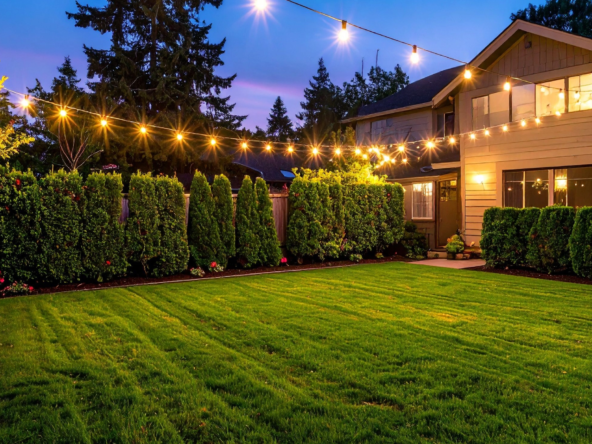TLDR
- Eagle offers single-level living, trails, and HOA-maintained options ideal for downsizers.
- Inventory remains tight, but pricing is nuanced, favoring prepared and flexible buyers.
- Sewer versus septic varies by neighborhood, requiring due diligence during inspections.
- Financing strategies like HELOCs and leasebacks help coordinate buy-then-sell moves.
What does “a good fit for active adults” really mean in Eagle?
When downsizers ask if Eagle is right for them, they want more than a yes or no. They want the feel of the neighborhoods, a realistic budget, and clarity on logistics. Eagle’s character blends small-town warmth with access to regional amenities. That balance is why so many active adults and empty nesters consider moving to Eagle Idaho, especially near the Boise River and along activity-rich corridors.
Data supports the trend. The city’s population was 30,346 in 2020 with a projected 33,756 by 2025, and the median age sits around 41.6 with about 20.9 percent at least 65. That tells me the community already serves a large share of active adults. Parks, golf, art festivals, and the Boise River Greenbelt add daily-life value. At the same time, the housing stock includes low-maintenance communities with HOA coverage, patio homes, and single-level options that make right-sizing practical.
Here is how I define it as Chris Budka:
- Proximity to trails, parks, healthcare, and everyday services within 15 to 25 minutes.
- Homes designed for low maintenance, single-level living, and accessible layouts.
- A market strategy that protects equity while easing timing between selling and buying.
How does the current market shape options for active adults?
Eagle’s market has been dynamic. Based on Intermountain MLS trends I track, median list prices in mid 2025 hovered around 1,049,000 while 12-month median sale prices over late 2025 averaged near 702,905. That split reflects a bifurcated market where luxury stays strong while mid-tier and entry-level options moderate. Inventory has increased statewide compared to the prior year but remains below long-term norms, which keeps competition steady in move-in ready segments.
For active adults, that means preparation and strategy matter. Homes that are single-level with updated mechanicals, modern kitchens, and HOA care often draw consistent interest. Days on market for well-priced homes remain reasonable, and cash or HELOC-backed offers can secure favorable timelines. If you are considering an Eagle Idaho home for sale, it is crucial to review your financing plan early and coordinate sale timing to reduce stress.
I also look at regional growth plans and park investments because they influence long-term livability and value. The City of Eagle’s comprehensive planning is prioritizing mixed-use corridors and recreation investment, including the coming Eagle City Athletic Park. The Ada County open space network continues to expand, including the Ada/Eagle Bike Park. These add “everyday lifestyle” dividends that buyers value.
What about utilities, transit, and day-to-day convenience?
Most Eagle neighborhoods inside the urban core are on sewer, but some edge areas use septic. Always verify via the City of Eagle utilities page and the Eagle Sewer District homepage. If a property has a septic system, the Idaho septic system rules and Central District Health outline permitting, maintenance, and inspection standards. Public transportation is limited, but Valley Regional Transit offers specialized services. Check Valley Regional Transit for Beyond Access options.
Which Eagle neighborhoods fit active adults best?
Eagle’s variety is a strength. As an Eagle Idaho realtor, I pair lifestyle preferences with community details like HOA scope, irrigation, and walkability. Here are examples near my office at 408 S Eagle Rd, Suite 205.
– Details: Gated 55+ community with social activities, single-level floor plans, HOA-maintained yards. Great lock-and-leave option with a comfortable, close-knit feel. – Watchouts: Limited inventory. Plan ahead if you have specific layout or orientation needs. – Typical timeline: When homes list, expect a 30 to 45 day close if priced appropriately.
- Island Woods
– Details: Riverside living with paths to the Boise River and pedestrian bridges. Many single-level and patio home options, architectural variety, lush landscaping. – Watchouts: Higher HOA dues than some areas. Backflow testing is required for City water customers by June 16 each year. – Typical timeline: 45 to 60 days depending on price point and seasonality.
- Legacy
– Details: Large master-planned community in northwest Eagle with lakes, paths, and golf. Newer construction offers modern accessibility features and low-maintenance options. – Watchouts: Sections vary by builder and HOA rules. Confirm irrigation and orientation for sun exposure. – Entry-level path: Smaller patio homes or townhomes typically present the most affordable entries.
- Brookwood
– Details: Mature landscaping, community pool, and trail access. Many single-level homes with larger yards and established trees. – Watchouts: Some homes may need cosmetic updates or mechanical refreshes if original. – Typical timeline: 35 to 55 days when priced in line with recent comps.
- Two Rivers
– Details: Luxury, water-centric community with extensive waterways, paths, and meticulous common areas. Strong appeal for single-level custom homes. – Watchouts: Premium pricing and architectural controls. HOA scope varies by sub-neighborhood. – Entry-level path: Smaller or older resale homes within the community’s interior pockets.
These are not the only options, but they illustrate how to match priorities. Near-everyday groceries, dining, and health services are generally within 10 to 20 minutes. For many, that is the sweet spot for convenience without sacrificing tranquility.
What are the pros and cons of choosing Eagle as an active adult?
Pros:
- Active lifestyle access with the Boise River Greenbelt, community pathways, and the Ada/Eagle Bike Park
- Choice of low-maintenance communities, patio homes, and single-level designs across budgets
- Strong community identity with arts, festivals, and small-town charm near regional amenities
- Reasonable drive times to medical services, airport, and downtown Boise
- HOA options that reduce yard work, exterior maintenance, and seasonal burdens
Cons:
- Limited public transportation, with specialized services rather than fixed-route convenience
- Inventory remains below long-term norms, so timing and readiness matter
How do I plan a smooth downsize and avoid common pitfalls?
Successful downsizing starts with clarity. Define must-haves like single-level living, HOA coverage, and access to trails. Then align budget with likely costs. Local septic pump services often range around 200 to 800 every 3 to 5 years. HOAs can range from about 100 to 300 monthly, though luxury communities may exceed that. Moving services for an in-town move typically run a few thousand dollars depending on volume and packing.
I often recommend these steps:
- Confirm utility setup early. Verify sewer connection with the Eagle Sewer District and check the City of Eagle utilities page for water and backflow requirements.
- If on septic, order records and plan an inspection. See Idaho DEQ and Central District Health for guidance.
- Use flexible financing. HELOCs, bridge loans, and leasebacks help you buy first, then sell.
- Aim for a 30 to 45 day purchase close and 7 to 10 days for post-closing possession if needed.
One of my clients used a HELOC to purchase a single-level patio home in Legacy. We negotiated a short inspection timeline and secured a 35 day close. They moved over a weekend and we listed their previous home the next week after light touch-ups. That sale closed 33 days later.
Another client preferred a 55+ setting. When a Pacific Heights listing fit the bill, we used a leaseback on their current home so they could close on the new one first. The leaseback gave them 14 days to move calmly, which reduced stress and protected their equity.
When timing is critical, I coordinate vendors, movers, stagers, and estate sale help. That concierge approach is how I provide the service level you expect from the Best Realtor in Eagle Idaho.
FAQs
1) Is Eagle walkable enough for active adults who love daily exercise? Eagle has pockets of strong walkability near the Boise River and in master-planned communities with internal paths. Many residents rely on the Greenbelt and neighborhood trails for daily steps. For errands, expect short drives to groceries and pharmacies. A careful neighborhood selection helps, and I map each client’s routine to homes that minimize driving while maximizing recreation.
2) Should I worry about sewer versus septic when buying in Eagle? Yes, confirm early. Many urbanized neighborhoods are on sewer, while some edges use septic. Verify with the Eagle Sewer District and review records. On septic, plan for pumping every few years and keep maintenance logs. On sewer, check for a sewer lateral inspection during buyer due diligence and verify city water customers’ backflow testing deadlines with the City of Eagle.
3) What does a realistic downsizing budget look like in Eagle? Budget for the purchase price, HOA dues, moving services, and any accessibility updates. Local moving often runs several thousand dollars, HOAs can be a few hundred monthly, and light renovations or grab bars are typically modest. If you use a HELOC or bridge loan, factor in interest costs. I build net proceeds estimates using Intermountain MLS comps so clients understand cash-on-hand.
4) Are there true 55+ neighborhoods in Eagle? Yes. Pacific Heights is a well-known 55+ gated community with social programming and low-maintenance living. Inventory is limited, so readiness is key. There are also non-age-restricted neighborhoods with many single-level and patio home options. I monitor upcoming listings, coming-soon hints, and private offerings to alert clients quickly when the right property appears.
5) How long will it take to prep, buy, and move if I start today? A common path is 2 to 4 weeks for decluttering and light prep, 2 to 6 weeks to identify the target home, and 30 to 45 days to close. If you buy first using a HELOC or bridge loan, we often list your current home within 7 to 14 days of move-in and aim for a 30 to 40 day sale. Timelines vary by season and price point.
6) What maintenance differences should I expect between neighborhoods? HOA-maintained communities reduce yard work and exterior care, which is ideal for active adults. In established neighborhoods with larger lots, expect more landscaping time or contractor support. For homes on city water, backflow testing is due by June 16 each year. If on septic, schedule pumping every few years and budget for inspections during purchase and future maintenance.
7) How does Eagle handle transportation for seniors or those with mobility needs? Public transit is limited, but specialized services exist. Valley Regional Transit’s programs evolve, and the Beyond Access option serves qualified riders. Plan for driving or rideshare for most errands and medical visits. I advise clients to prioritize neighborhoods close to daily destinations and to explore mobility aids in home design so independence is preserved.
Conclusion
The bottom line Eagle is an excellent fit for many active adults thanks to single-level living options, HOA-maintained communities, and miles of trails along the Boise River. Market conditions are competitive but manageable with a clear plan and flexible financing. Neighborhoods like Pacific Heights, Island Woods, Legacy, Brookwood, and Two Rivers each offer unique strengths. The right choice depends on your routines, budget, and desire for maintenance-light living. If you are moving to Eagle Idaho and want a calm, well-orchestrated transition, I would be honored to guide you, from utilities and inspections to negotiations and closing.










